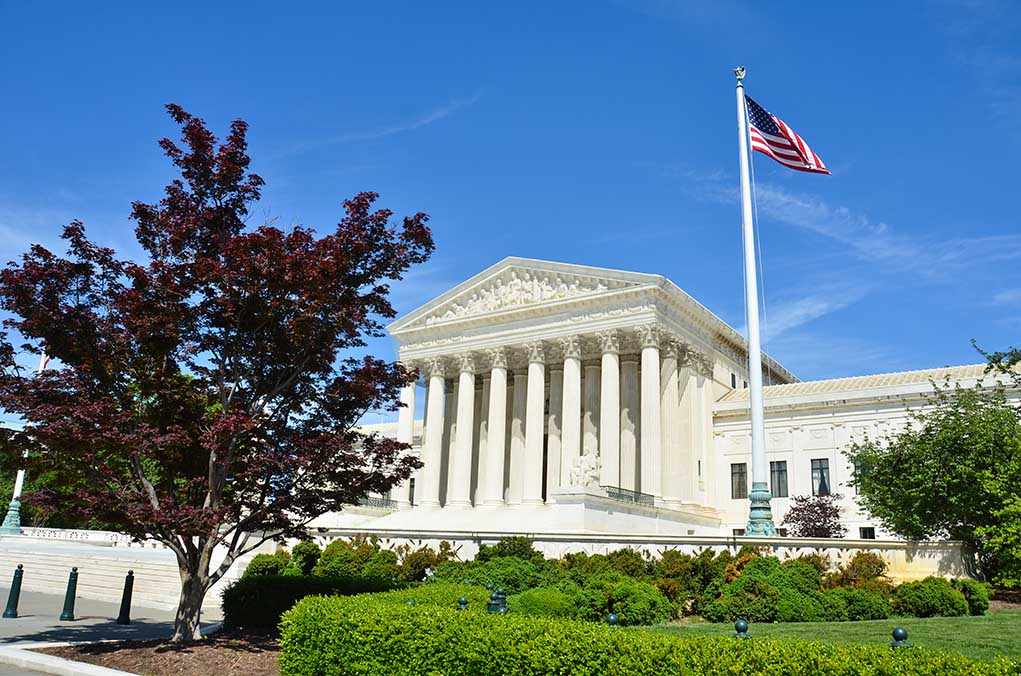
The Supreme Court’s decision to let President Trump fire a Biden-appointed FTC commissioner without cause has ignited a debate over presidential power and the future independence of federal agencies.
Story Snapshot
- Supreme Court allows President Trump’s removal of FTC Commissioner Rebecca Slaughter to stand, reversing a lower court mandate for reinstatement.
- This signals the Court’s openness to reconsider a 90-year-old precedent that limits presidents from firing independent agency officials at will.
- The decision strengthens executive authority, potentially reshaping how presidents oversee federal agencies long protected from political influence.
- Conservatives see this as a crucial step to restore accountability and reverse years of unchecked bureaucratic power.
Supreme Court Backs Presidential Authority Over Federal Agencies
On September 22, 2025, the Supreme Court granted President Trump’s request to stay a lower court’s order reinstating FTC Commissioner Rebecca Slaughter, a Biden appointee removed for “inconsistency with Administration’s priorities.” This action effectively lets Trump’s removal stand while the case proceeds, marking a direct challenge to the long-standing restriction that shields certain federal officials from at-will dismissal by the president. The move is seen by many as a victory for those demanding accountability from unelected bureaucrats who have long resisted the will of elected leaders.
The controversy centers on the precedent set by the 1935 Humphrey’s Executor decision, which barred presidents from removing FTC commissioners except for cause. For decades, this precedent limited the president’s ability to shape key regulatory agencies and, critics argue, fueled an unaccountable “administrative state.” Recent Supreme Court cases, including Seila Law LLC v. CFPB (2020) and Collins v. Yellen (2021), have chipped away at these protections for other agencies, but the FTC’s multi-member structure kept it insulated—until now.
Trump’s Removals Spark Constitutional Showdown
President Trump’s July 2025 removal of both Rebecca Slaughter and Alvaro Bedoya from the FTC broke new ground by directly testing whether the White House can align agency leadership with its policies—without waiting for Congress to act. The district court initially ruled against Trump, ordering Slaughter’s reinstatement, but subsequent appeals set the stage for a Supreme Court review. The high court’s willingness to grant a stay, even without a detailed opinion, signals a readiness to revisit and possibly overturn Humphrey’s Executor, opening the door to much broader presidential control over federal agencies traditionally shielded from direct oversight.
Conservatives have long argued that unelected agency officials undermine the president’s constitutional duty to execute the laws and threaten the separation of powers by creating a “fourth branch” of government. The Trump administration’s position is that only the president, elected by the people, should set the direction for executive agencies. Supporters say this is essential to restoring democratic accountability and ensuring that agencies like the FTC serve the public, not entrenched bureaucratic interests.
Implications for the Administrative State and Conservative Values
If the Supreme Court ultimately overturns or narrows Humphrey’s Executor, future presidents could remove independent agency officials at will, fundamentally shifting the balance of power in Washington. For conservatives, this would be a long-overdue correction to decades of bureaucratic overreach and judicial activism—especially after years of leftist policies that promoted regulatory expansion, undermined constitutional checks and balances, and insulated federal agencies from public accountability. The immediate effect is uncertainty for agency officials and industries regulated by the FTC, but the long-term effect could be the end of the administrative state’s unchecked influence on American life.
Critics warn that this could politicize regulatory enforcement, but many conservatives welcome the change as a return to constitutional principles. The next phase of litigation will determine whether the Supreme Court fully repudiates the 1935 precedent or merely narrows it, but one thing is clear: the battle over presidential power—and the future of America’s constitutional order—is far from over.
Sources:
U.S. Court of Appeals for the D.C. Circuit, No. 25-5261, September Term, 2025
Supreme Court of the United States, 25A264 Trump v. Slaughter (09/22/2025)














